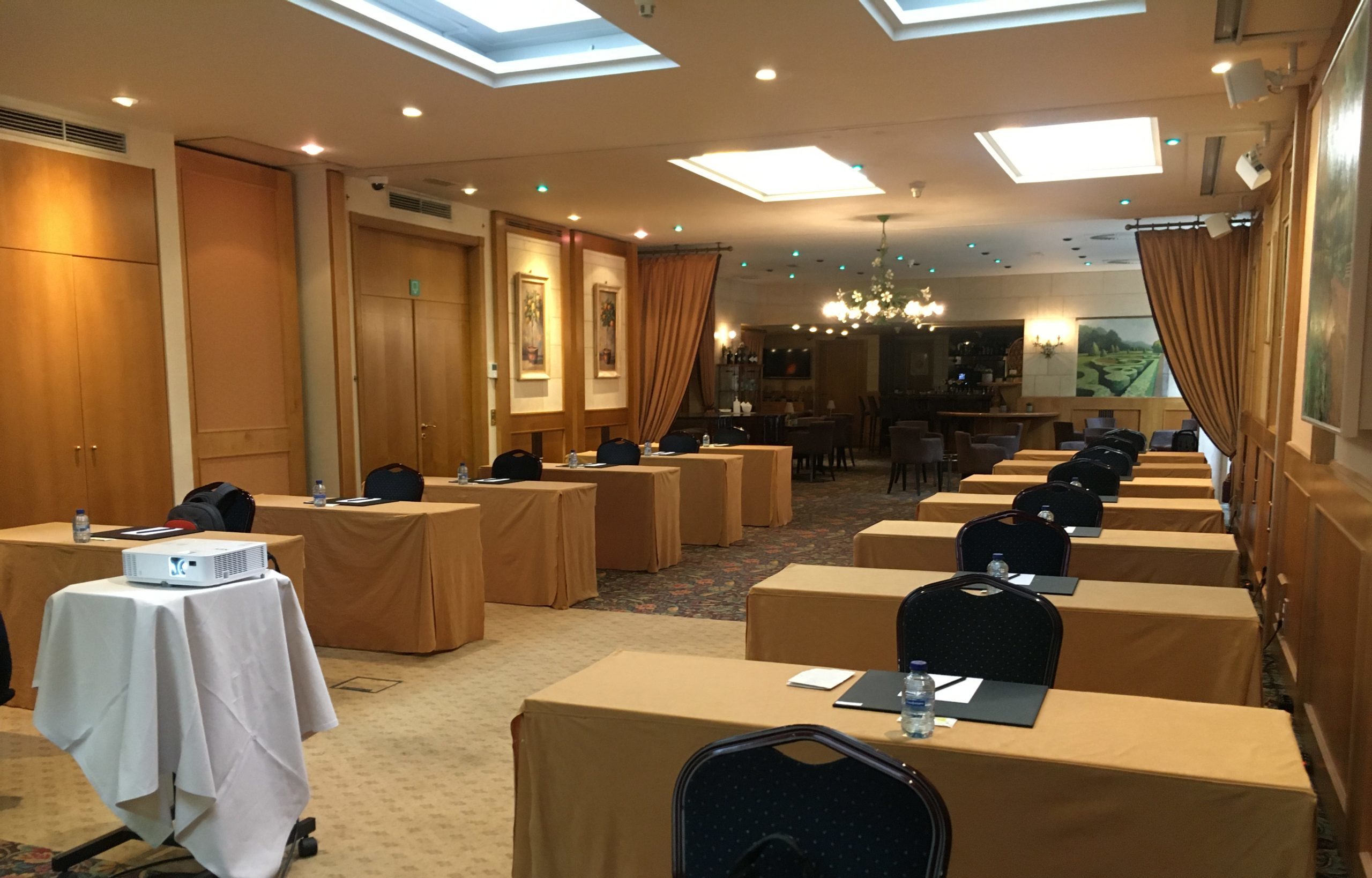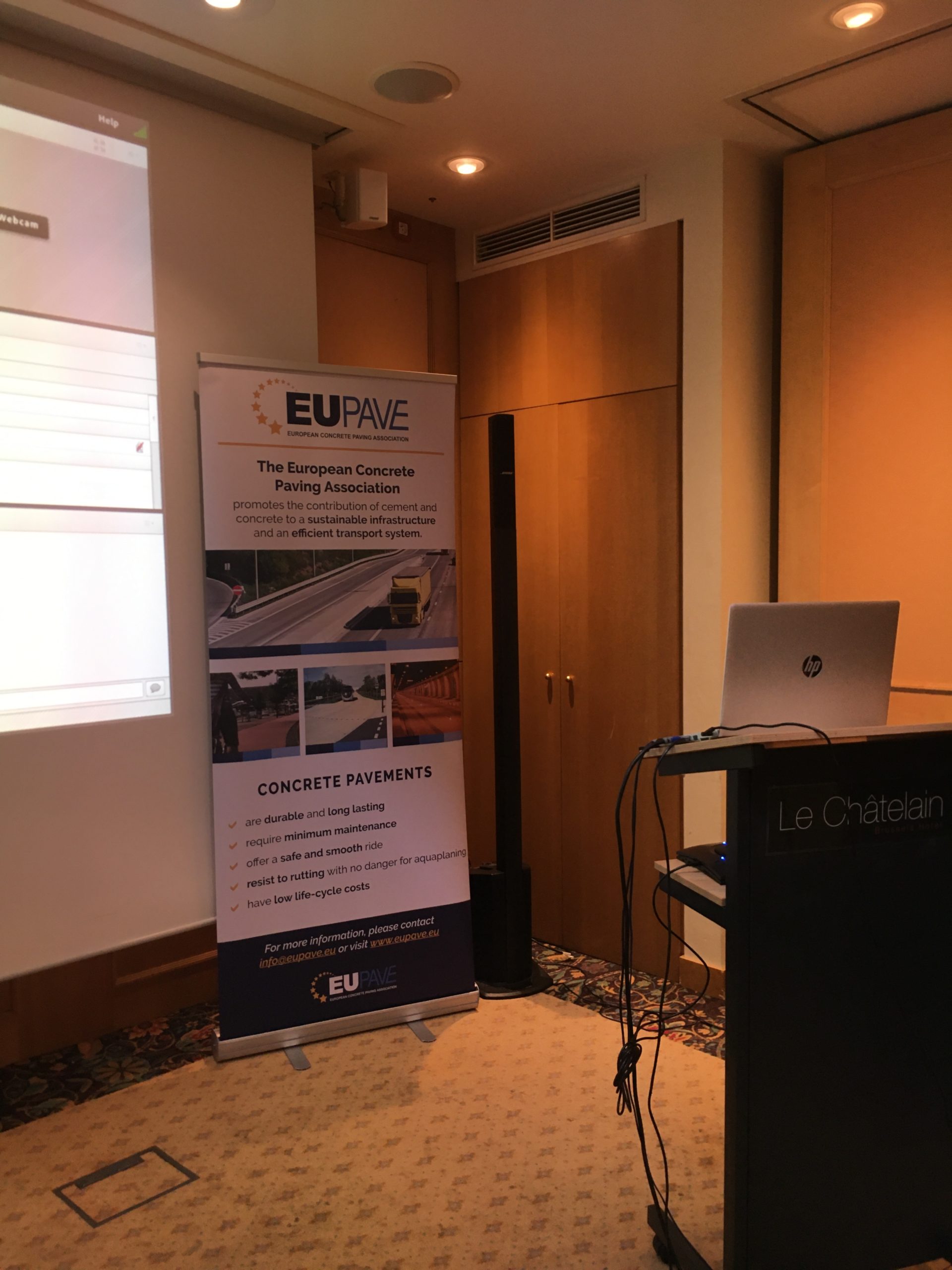Great presentations on “Concrete Pavement Preservation” at EUPAVE’s technical workshop/webinar
19/10/2020
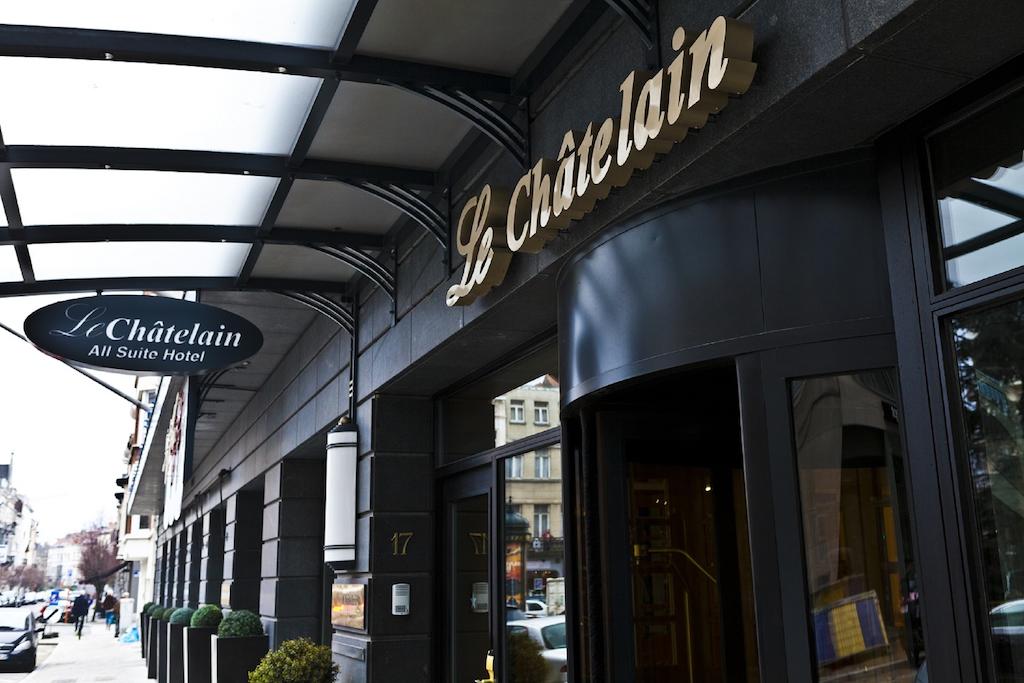
© Hôtel Le Châtelain
On Wednesday 14th October, EUPAVE held at Hôtel Le Châtelain in Brussels its 5th workshop on Best Practices in Concrete Paving. The theme for this year was “Concrete Pavement Preservation”.
Initially planned in March 2020, the workshop had to be rescheduled due to the sanitary crisis.
EUPAVE then decided to combine both a physical (limited to 10 persons) and an online event by broadcasting the event live. Attended by around 50 participants, the workshop/webinar gathered six experts in concrete paving.
Mr. Luc Rens, Managing-Director of EUPAVE, opened the workshop and welcomed the participants on behalf of Mr. Jeroen de Vrieze, chairman of EUPAVE Best Practices working group. Mr. de Vrieze could not physically attend due to the restrictive travel measures.
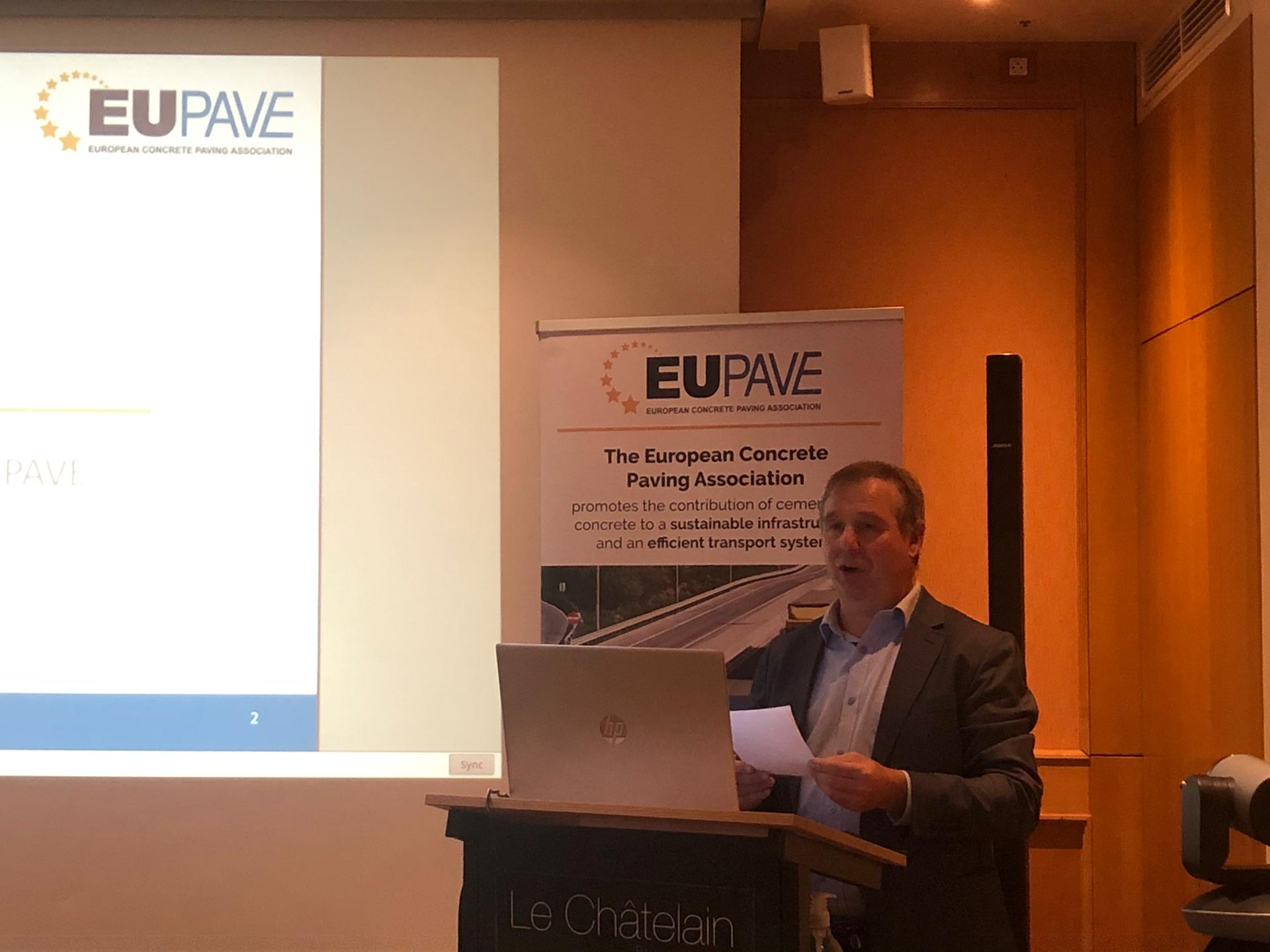
Luc Rens
Mr. Rens started the event with a presentation on the definition, concepts and strategies of concrete pavement preservation. Referring to an excellent publication on Concrete Pavement Preservation by the U.S. Federal Highway Administration, he presented a broader definition of CPP as “a strategy of extending concrete pavement service life as long as possible by arresting, greatly diminishing or avoiding the pavement deterioration process”. This strategy can be achieved by
- Designing and constructing durable long-life concrete pavements (LLCP structurally adequate and relatively distress-free throughout a long service life)
- Overlays (asphalt or concrete) as a preservation treatment
- Maintaining serviceability of the existing concrete pavement using CPR (restoration) treatments
He briefly spoke about some surface restoration techniques as a possible CPR treatment: diamond grinding, the Next Generation Concrete Surface, fine-milling and micro-milling.
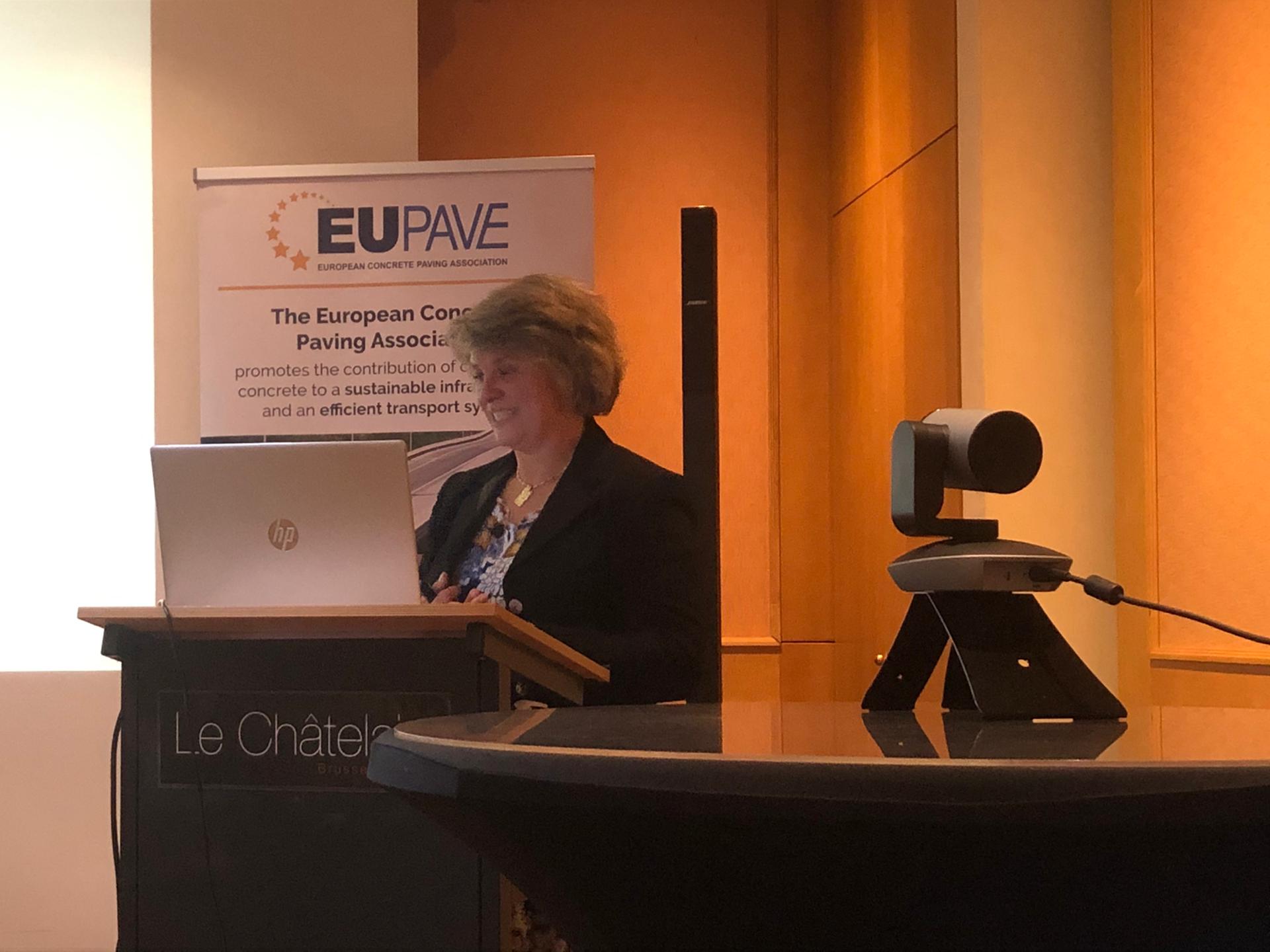
Anne Beeldens
Mrs. Anne Beeldens, owner and Consulting Engineer at AB-Roads gave a presentation on “Road Auscultation and Condition Assessment”. The well-illustrated presentation, including several practical cases, dealt with the following three domains:
- Evaluating structural adequacy: ability to withstand repeated structural loading
- Assessing the durability of the pavement materials: ability to withstand environmental deterioration
- Assessing the functional adequacy of the pavement
- Smoothness
- Noise
- Skid resistance…
Followed two presentations on “Maintenance and Repair Techniques for Concrete Slabs” from Mr. Pascal Buys and Mr. Tim Alte-Teigeler. As Mr. Alte-Teigeler could not attend the event in person, his presentation was pre-recorded.
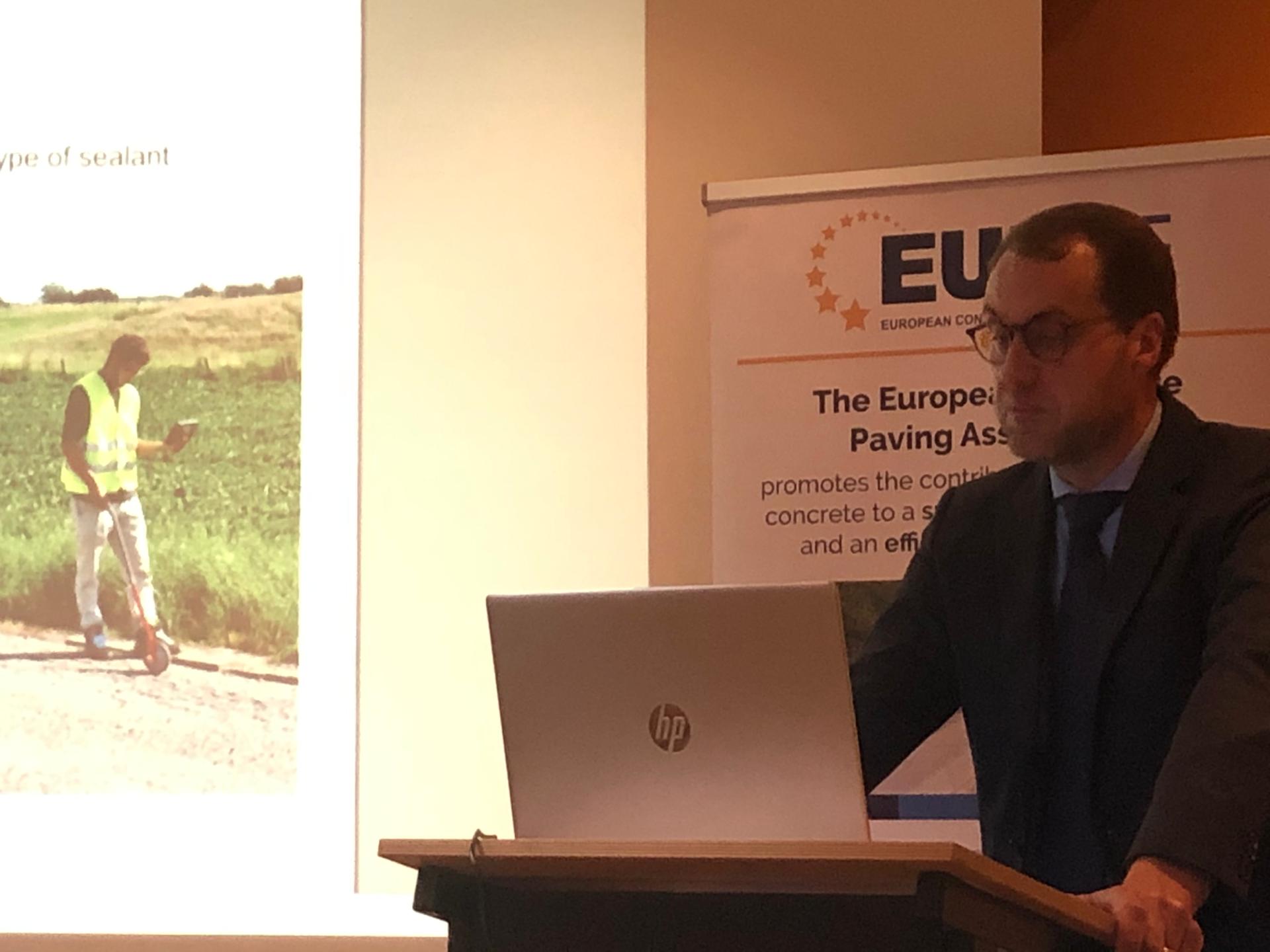
Pascal Buys
Mr. Buys, Managing-Director of Robuco, talked about the different options for joint maintenance and crack repair and presented the benefits of dowel bar retrofit, with a case study of the N44 in Belgium. Restoring the load transfer between slabs can easily extend the service life of an old concrete road (> 50 years in this case) by more than 10 years.
Mr. Tim Alte-Teigeler, Head of R&D of Otto Alte-Teigeler GmbH, focused on cross stitching, partial depth repair, lifting and stabilizing of slabs and full depth repair. He stressed the importance to choose the suitable repair technique for any pattern of damage. In order to ensure the long service life of concrete pavements, repair measures have to be applied on short notice after damages occur.
After a coffee break, Mr. Didier Snoek, Researcher at Magnel-Vandepitte Laboratory for Structural Engineering and Building Materials at Ghent University introduced the “Self-healing concrete by means of superabsorbent polymers”. His presentation included information on hydrogels, microstructure, self-sealing and seal-healing. This innovative development is obviously a promising solution for concrete pavement preservation in the future. Field tests are already going on in some projects, confirming the laboratory results.
Finally, Mr. Elia Boonen, Researcher at the Belgian Road Research Centre, talked about “Durable repair and rehabilitation of CRCP”. The principles for continuously reinforced concrete are different compared to jointed plain concrete. In the first place, the continuity of the longitudinal steel always needs to be restored in case of repairs. Different repair techniques were presented as well as some larger rehabilitation projects.
Presentations were followed by a Q&A.
Luc Rens ended the workshop with some words of conclusion.
Presentations:
1. Luc Rens – Intro & CPP – EUPAVE BP Workshop, 14102020
2. Anne Beeldens – Road auscultation and condition assessment – EUPAVE BP Workshop, 14102020
3. Pascal Buys – Maintenance repair tech concrete slabs – EUPAVE BP Workshop, 14102020
4. Tim Alte-Teigeler – Maintenance and repair techniques for concrete slabs – EUPAVE BP Workshop, 14102020
5. Didier Snoeck – Self-healing concrete – EUPAVE BP Workshop, 14102020
6. Elia Boonen – CRCP Repair – EUPAVE BP Workshop, 14102020
